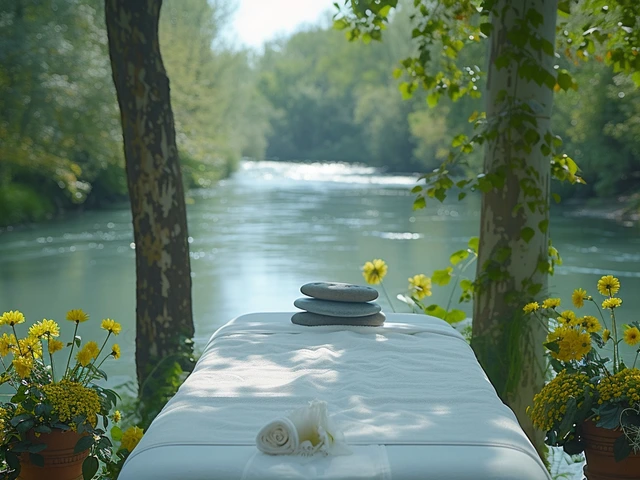Hawaiian Culture: Traditional Wellness, Lomi Lomi, and the Aloha Way
Hawaiian traditions mix movement, touch, breath, and community to support both body and mind. Lomi lomi massage is a hands-on practice that uses long flowing strokes, intuitive pressure, and rhythmic motion to ease tension and improve circulation. You can try simple lomi-inspired moves at home: warm your hands, use steady long strokes along the limbs, and keep the motion relaxed rather than forceful. Even five minutes can help reduce stiffness after a walk.
Hula is more than dance. It trains balance, builds core strength, and connects breath with movement. A few basic hula steps performed slowly add gentle mobility to hips and spine, and they invite mindfulness because you focus on rhythm and posture. Try a short hula flow for five minutes in the morning to wake up the body without harsh impact.
The aloha mindset matters. Aloha in Hawaiian culture means kindness, respect, and living in harmony with others and nature. Practicing aloha reduces stress by shifting focus from worry to simple human connection. Small changes like leaving your phone aside during meals or saying a genuine hello to a neighbor can recreate that calm, communal feel.
Herbal medicine and plant knowledge are part of the story. Traditional Hawaiian healers used local plants as poultices, teas, and topical oils. If you are curious, start with safe, well-known herbs like ginger for digestion or turmeric for mild inflammation, and always check with a healthcare provider before trying new herbal remedies. Modern wellness borrows these ideas but pairs them with safety and science.
Practical Hawaiian Wellness Techniques
Make a short routine mixing breath, touch, and movement. Begin seated with three deep belly breaths to slow your heart rate. Follow with two minutes of flowing self-massage on the neck and shoulders using light oil. Add a gentle hula-inspired hip circle or step to loosen your lower back. Finish with a moment of gratitude or a mindful pause to bring the aloha mindset into your day. Repeat this routine whenever you feel tense or before bed.
Respect and Practice Safely
Hawaiian practices are tied to culture and history. Learn from qualified teachers, especially for formal lomi lomi training or ceremonial practices. Avoid commercializing sacred elements or using cultural symbols without understanding. When adapting these practices, keep intent humble: focus on health, connection, and respect. That way you get benefits and honor the people who developed them.
Many Hawaiian ideas translate well to pet care. Gentle flowing strokes inspired by lomi can calm a nervous dog when done softly along the spine and shoulders. Always watch your dog's reactions and stop if they pull away or show discomfort. Pair massage with slow breathing and a quiet voice to strengthen trust. For any new therapy check with your vet, especially for older pets or those with medical conditions. If you're curious, look for local classes that teach cultural context and safe methods for people and animals. Respect the roots and always acknowledge Hawaiian teachers' knowledge.

Kahuna Explained: Secrets, History, and Modern Influence
Explore the little-known world of kahuna—Hawaii’s spiritual experts, healers, and wisdom keepers. Learn their history, secret practices, and impact on the modern world.

Unlocking Radiant Skin with Gua Sha Techniques
Aug, 14 2024



